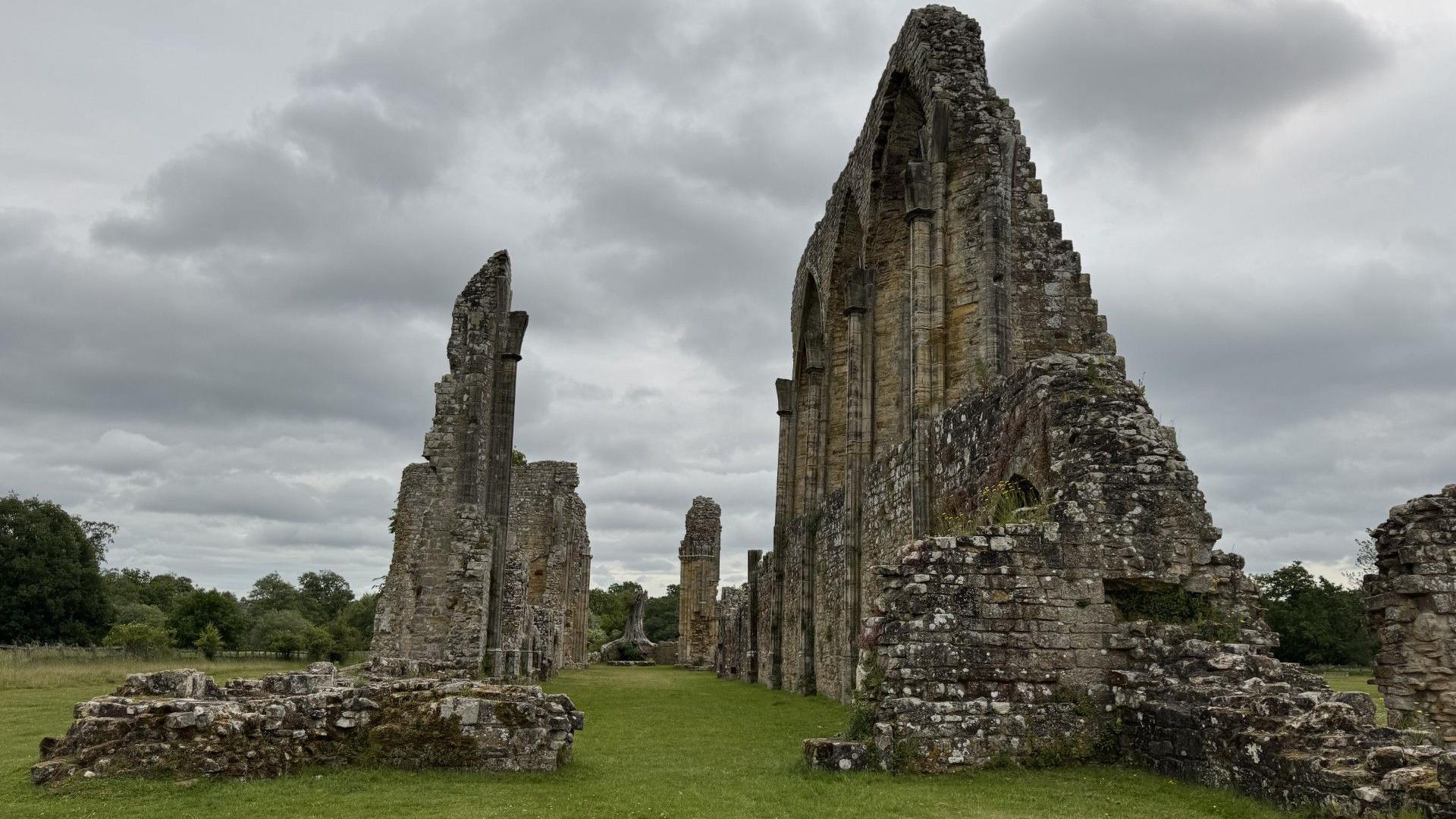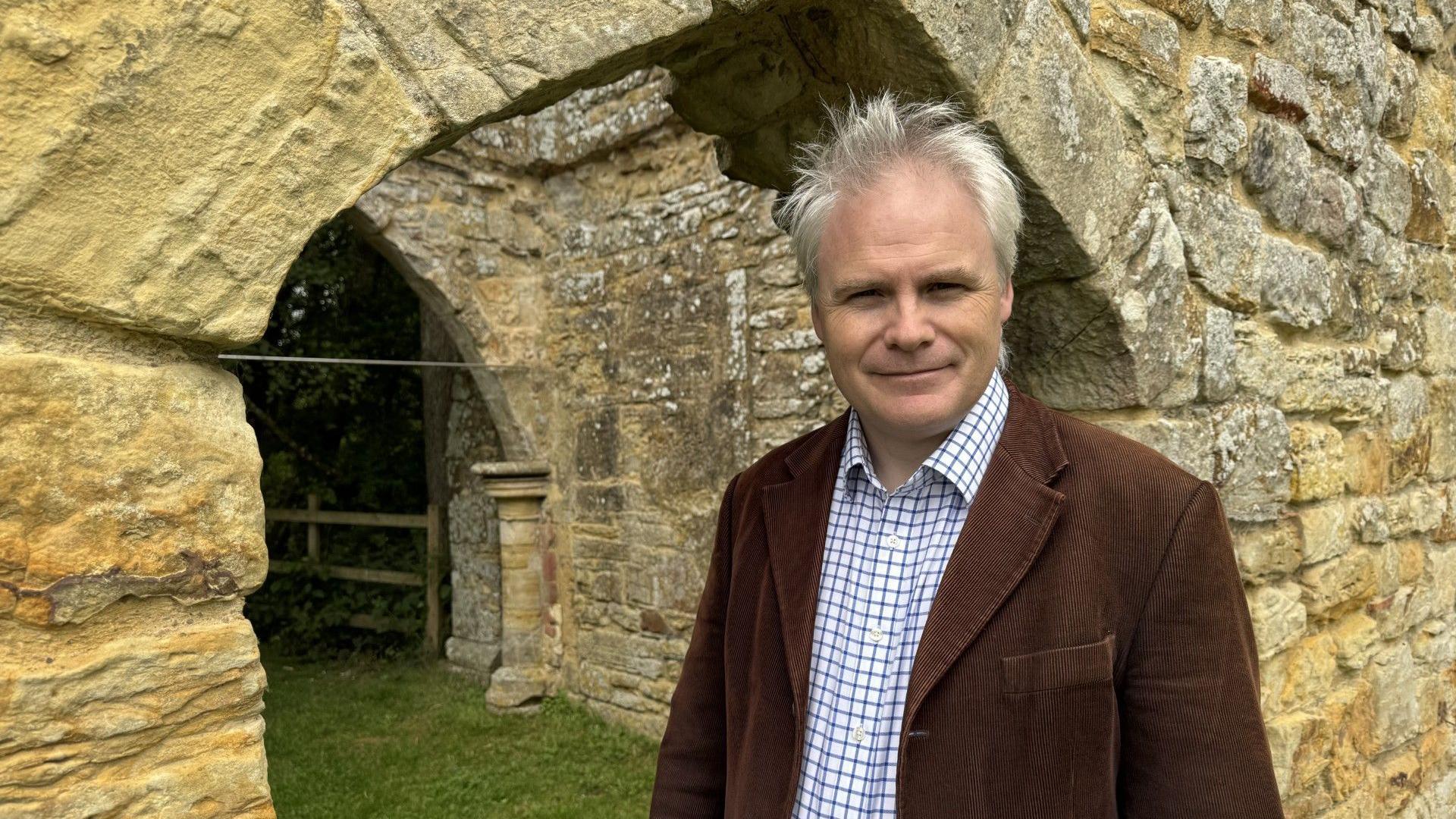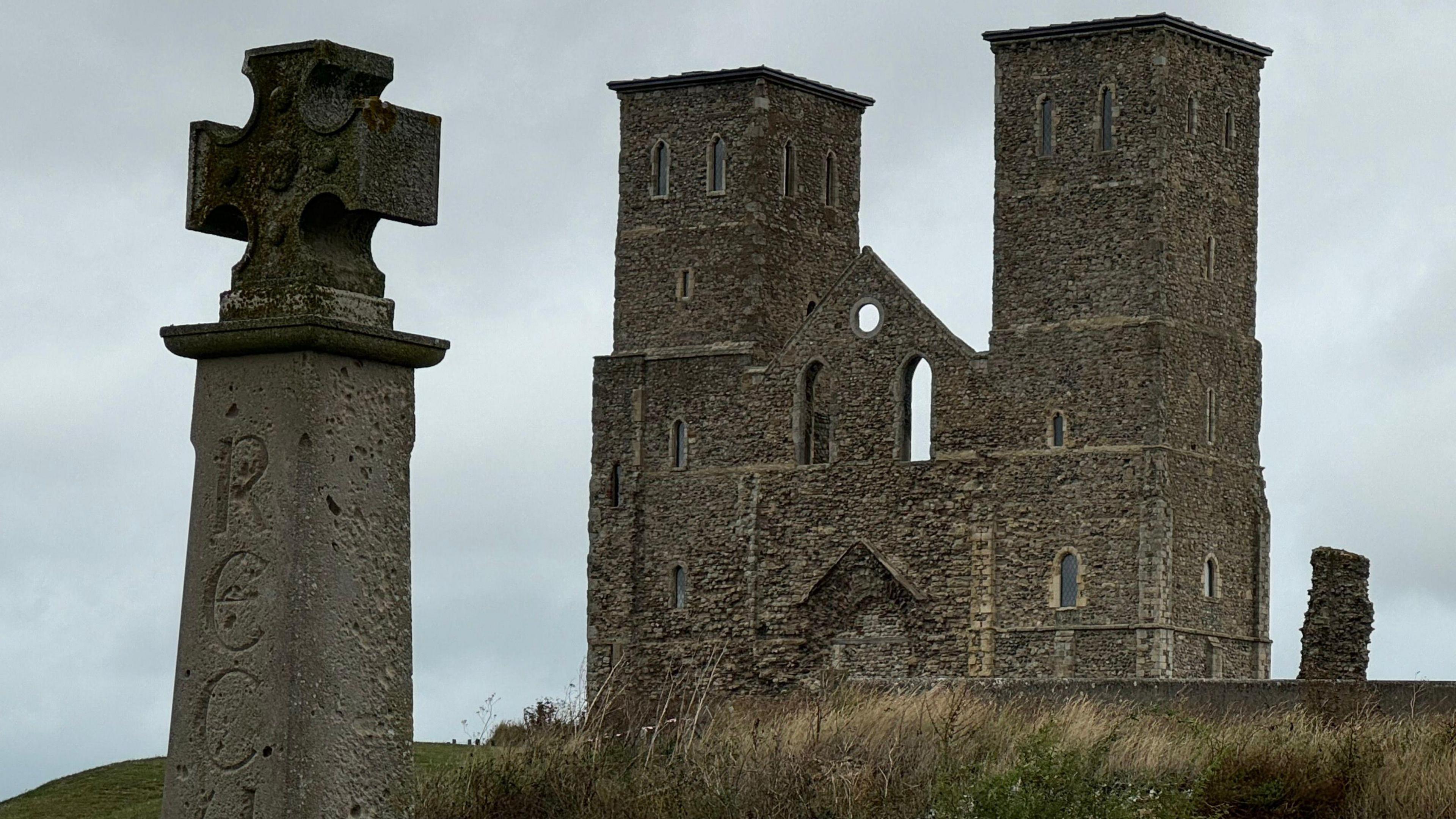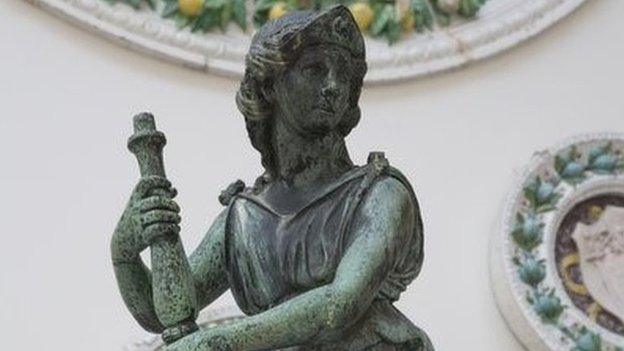Search for descendants of 1525 abbey rioters

Bayham Abbey was the site of a riot in 1525
- Published
Historians are searching for living descendants of rioters who fought to save a Kent abbey from destruction 500 years ago.
More than 100 villagers from Bayham near Tunbridge Wells took up arms in 1525 against a plan by Cardinal Thomas Wolsey to close the local monastery as part of religious reforms.
English Heritage now wants to find relatives of those who stormed Bayham Abbey, with 4 June marking the anniversary.
The rebellion and closure of the monastery is seen by historians as a "harbinger" of the dissolution of the monasteries by Henry VIII a decade later.
Roy Porter, senior curator of properties for English Heritage, said the abbey was closed by Cardinal Wolsey in order to help fund his own religious colleges at Oxford and Ipswich.
He said: "This was about the cash.
"What Cardinal Wolsey would say if he was standing here today was that he was transferring resources from a relatively small and insignificant abbey to something much bigger which would train the next generation of priests."

English Heritage wants to track down descendants of the rioters
More than 100 people carrying longbows, swords and clubs stormed the gatehouse and temporarily restored the abbey's canons - only to see them finally evicted just a week later.
As a result of the riot 31 of the men were indicted by the Crown.
English Heritage wants to find descendants of the local tradesman, including shoemakers, labourers and farmers.
Not only does this list contain familiar surnames of today such as Godfrey, Large and Palmer but it also gives an insight into the occupations of those whose livelihood depended on the religious community.
John Heywood was a rapier who sold fish inland and which appeared on the abbey menu, William Lamkyn was a tailor, while Stephen Palmer was a cordwainer who made shoes.
Michael Carter, English Heritage historian, said: "The Bayham Abbey uprising is a fascinating precursor to Henry VIII's religious reforms, a harbinger not only of the dissolution of the monasteries just ten years later, but also of the Pilgrimage of Grace."
Anyone who thinks they may have a family connection to the rioters should contact English Heritage.
Follow BBC Kent on Facebook, external, on X, external, and on Instagram, external. Send your story ideas to southeasttoday@bbc.co.uk, external or WhatsApp us on 08081 002250.
Related topics
- Published10 September 2024

- Published24 February 2018
